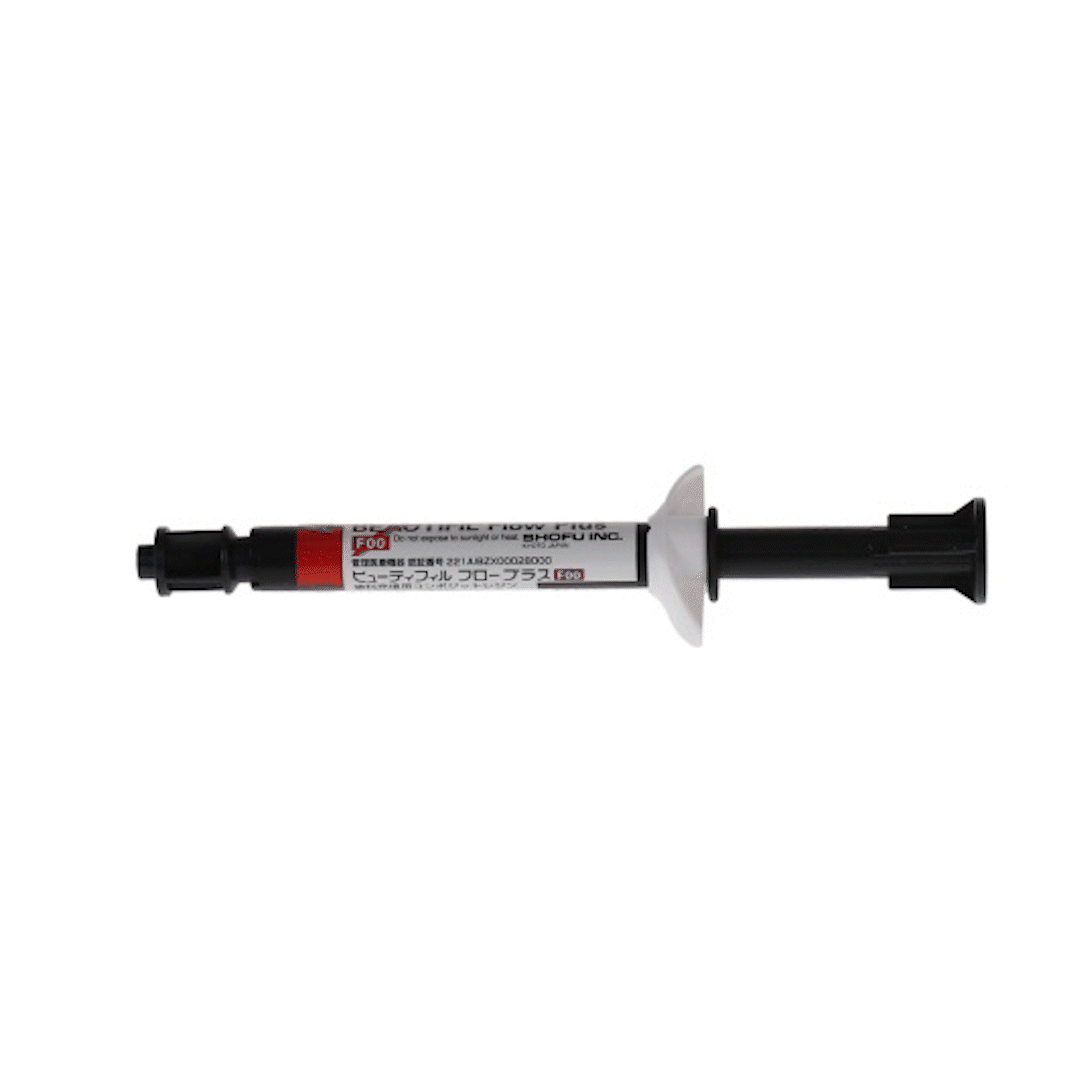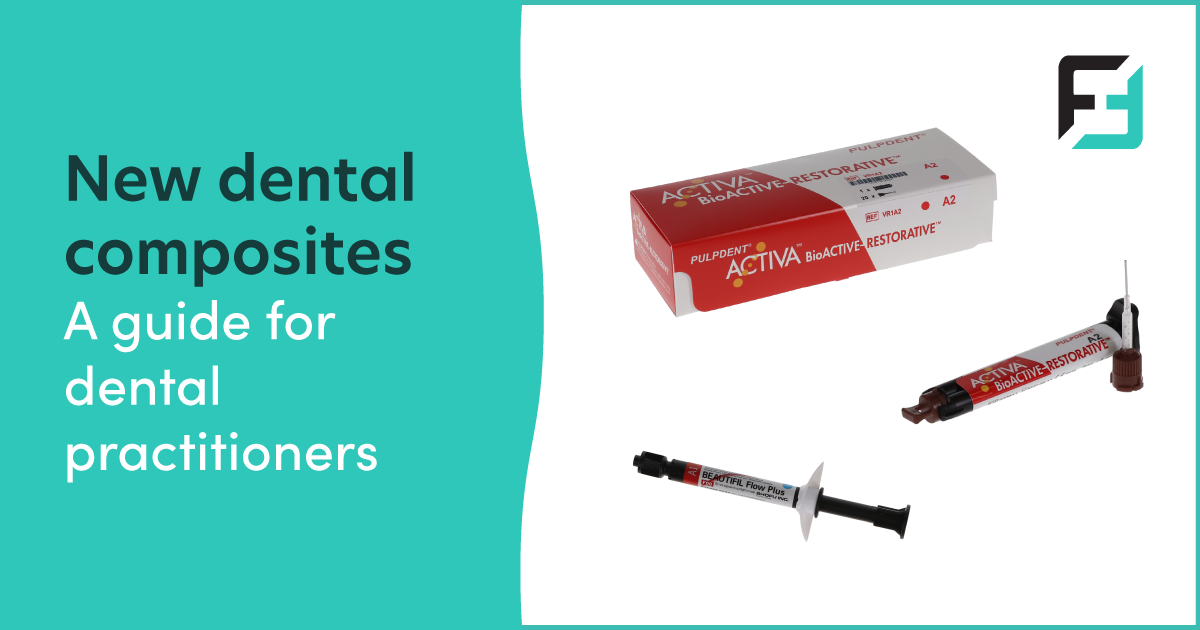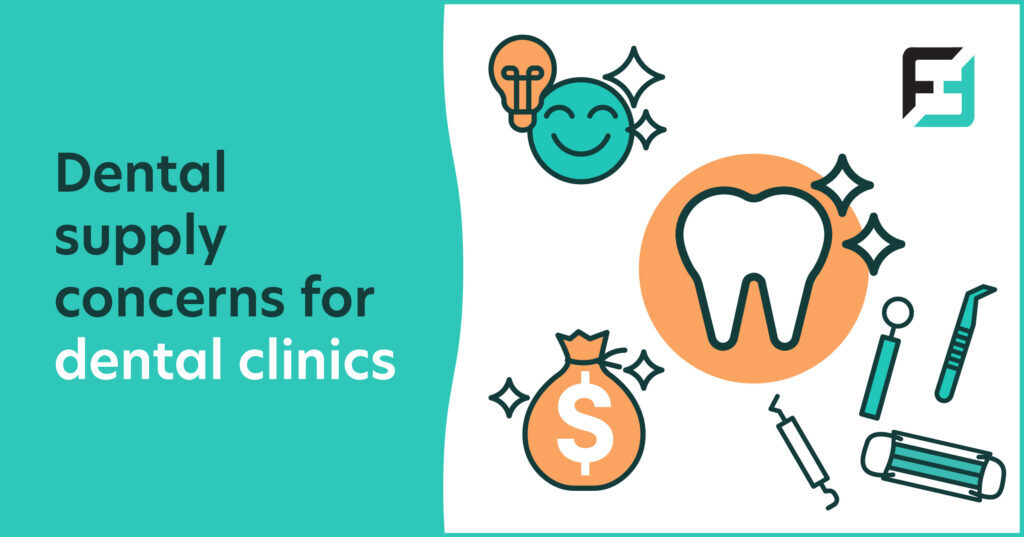Two cutting-edge dental composites available on the market right now.
Advancements in restorative materials play a pivotal role in elevating the quality of patient care. In particular, dental composites have undergone significant transformations in recent years, presenting practitioners with a myriad of options to enhance restorative procedures. A dental composite is a tooth-colored filling material composed of a resin matrix and inorganic fillers. Used in restorative dentistry, it mimics natural teeth, providing durability and aesthetics. Its versatility addresses various dental issues, including cavities, bonding, and reshaping, making it a standard choice for modern dental procedures.
This blog will explore the latest dental composite materials on the market, providing a comprehensive analysis of their properties, application techniques, and how they contribute to the improvement of restorative dentistry.
Beautifil Flow Plus Hybrid Composite

Shofu Dental is known for its excellence in dental composites, producing high-quality materials renowned for aesthetic properties and ease of use. Their dental composites, such as Beautifil II and Beautifil Flow Plus, are recognized for their ability to mimic natural tooth structure, offering a harmonious blend of esthetics and functionality in restorative dentistry.
Properties
Beautifil Flow Plus Hybrid Composite is a notable addition to the arsenal of dental composites on the market today, characterized by its advanced hybrid formulation. This light-cure composite combines the benefits of both microfill and nanofill technologies, resulting in a material with exceptional esthetics, strength, and wear resistance.
The hybrid composition of Beautifil Flow Plus ensures a high filler content, contributing to improved mechanical properties and superior polishability. The material's chameleon effect enables seamless blending with the natural tooth structure, making it an ideal choice for anterior restorations where esthetics are of utmost importance.
Application techniques
Designed for a variety of applications, Beautifil Flow Plus Hybrid Composite exhibits excellent flowability, allowing for precise placement in challenging areas. Its ability to adapt and conform to cavity preparations simplifies the restoration process, particularly in cases where access is limited.
The material's light-curing nature provides practitioners with control over the curing time, enabling meticulous shaping and contouring before the final curing step. While its handling characteristics make it suitable for both anterior and posterior restorations, practitioners should adhere to recommended curing times and techniques to achieve optimal results.
Activa BioActive Composite Resin Restorative

Pulpdent is known for its innovation in dental materials, including dental composites. They are recognized for developing unique and bioactive dental products, such as their Activa BioActive Composite Resin Restorative, known for their bioactive properties that promote remineralization and contribute to overall tooth health.
Properties
Activa BioActive Composite Resin Restorative stands out for its unique composition that incorporates a bioactive resin matrix. This innovative formulation includes a bioactive glass filler, which not only provides strength and durability but also contributes to the overall health of the tooth. The material releases calcium, phosphate, and fluoride ions, creating an environment conducive to remineralization.
The bioactive nature of this composite promotes a natural integration with the tooth structure, reducing the risk of secondary decay. Its ability to adapt to the dynamic oral environment sets it apart, ensuring a long-lasting restoration that actively contributes to the patient's oral health.
Application Techniques
Activa BioActive Composite Resin Restorative is a dual-cure material, offering flexibility in application. Practitioners can choose between light-curing for a rapid and efficient procedure or allowing for self-curing in areas with limited light access. The material's handling characteristics, such as its sculptability and adaptability, make it a preferred choice for various restorative procedures, including direct restorations and core build-ups.
The material's self-adhesive properties eliminate the need for a separate bonding agent in certain cases, streamlining the restorative process. However, it is essential for practitioners to be well-versed in the specific application guidelines to maximize the benefits of this advanced composite.
Conclusion
Practitioners are presented with an array of options to elevate the standard of care in restorative dentistry as the landscape of dental materials evolves. Activa BioActive Composite Resin Restorative and Beautifil Flow Plus Hybrid Composite exemplify some of the advancements in dental composites, each offering unique properties that cater to specific clinical scenarios.
Understanding the properties, application techniques, and the ways in which these materials enhance restorative procedures is crucial for advanced practitioners seeking to stay at the forefront of modern dentistry. Navigating the world of dental composites involves not just keeping abreast of the latest innovations but also discerning the nuanced benefits of each material to tailor restorative solutions that prioritize both function and esthetics. By embracing these cutting-edge materials, advanced practitioners can truly redefine the landscape of restorative dentistry, offering patients superior outcomes and a renewed sense of confidence in their smiles.


.png)

